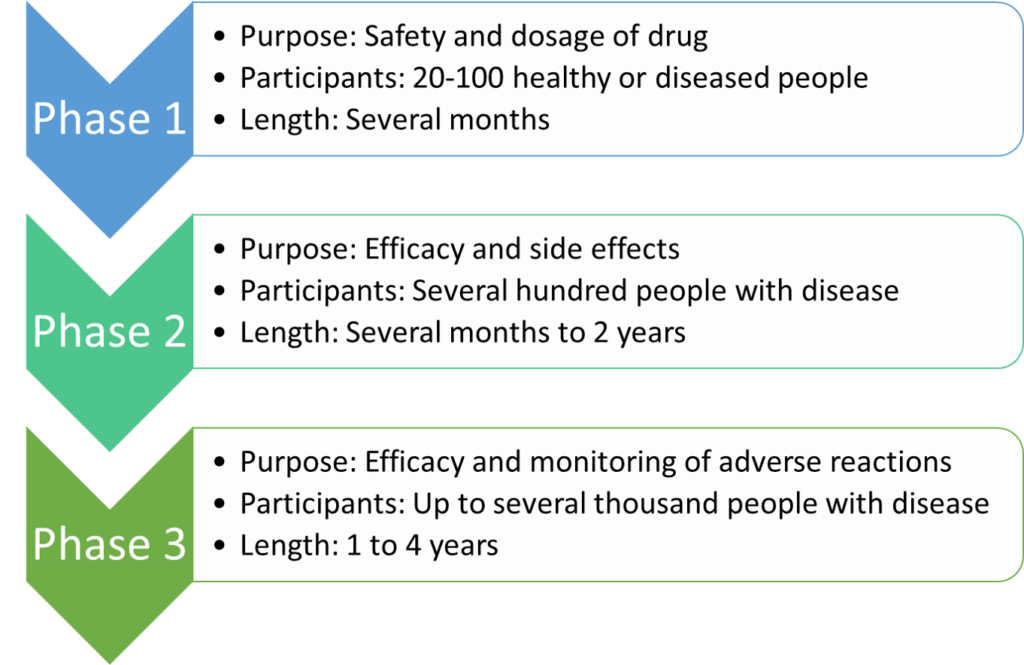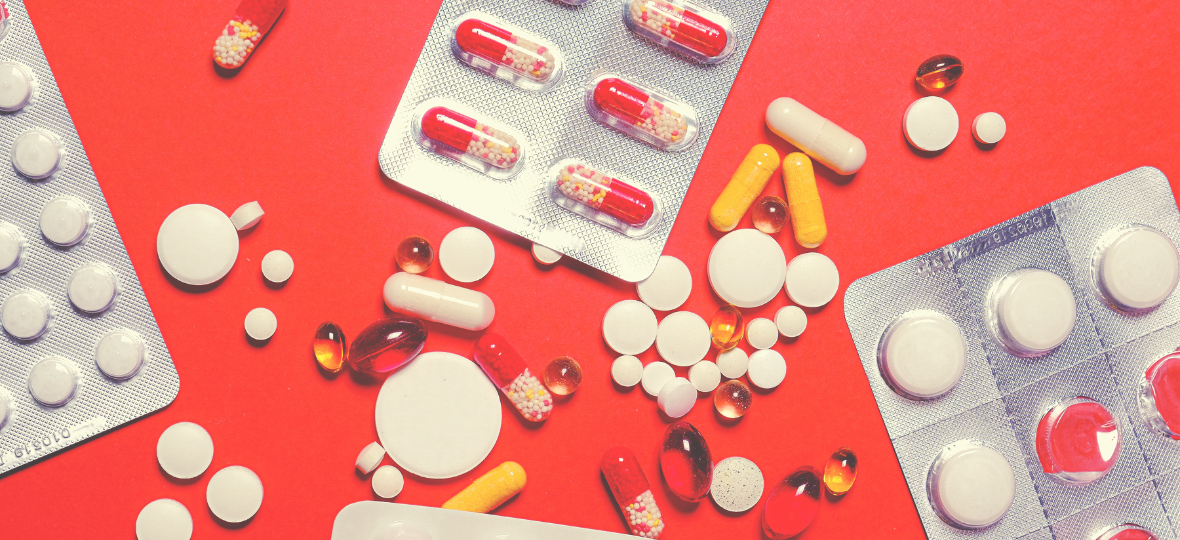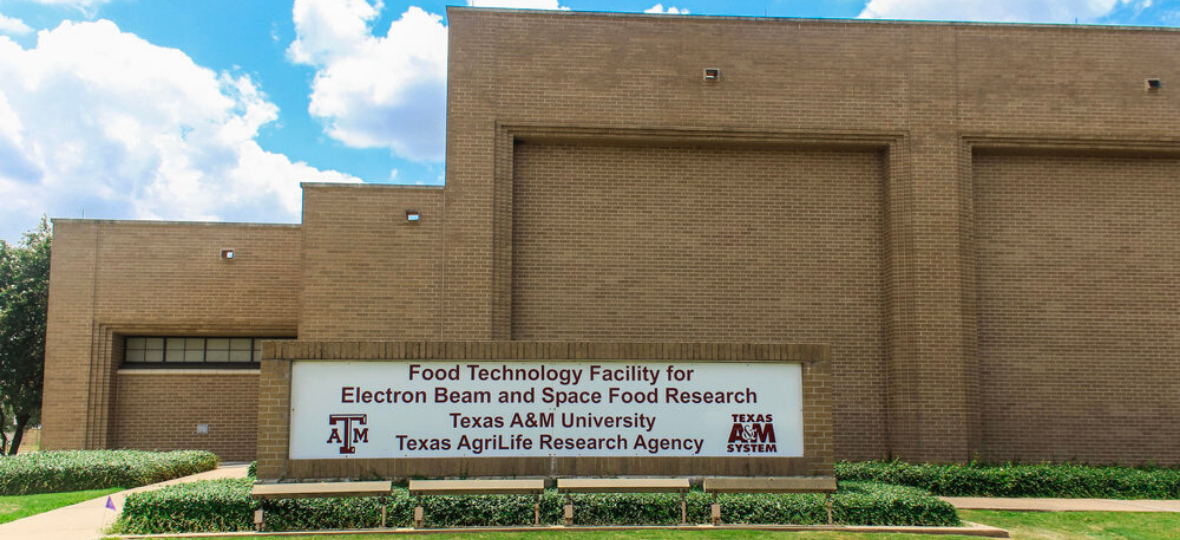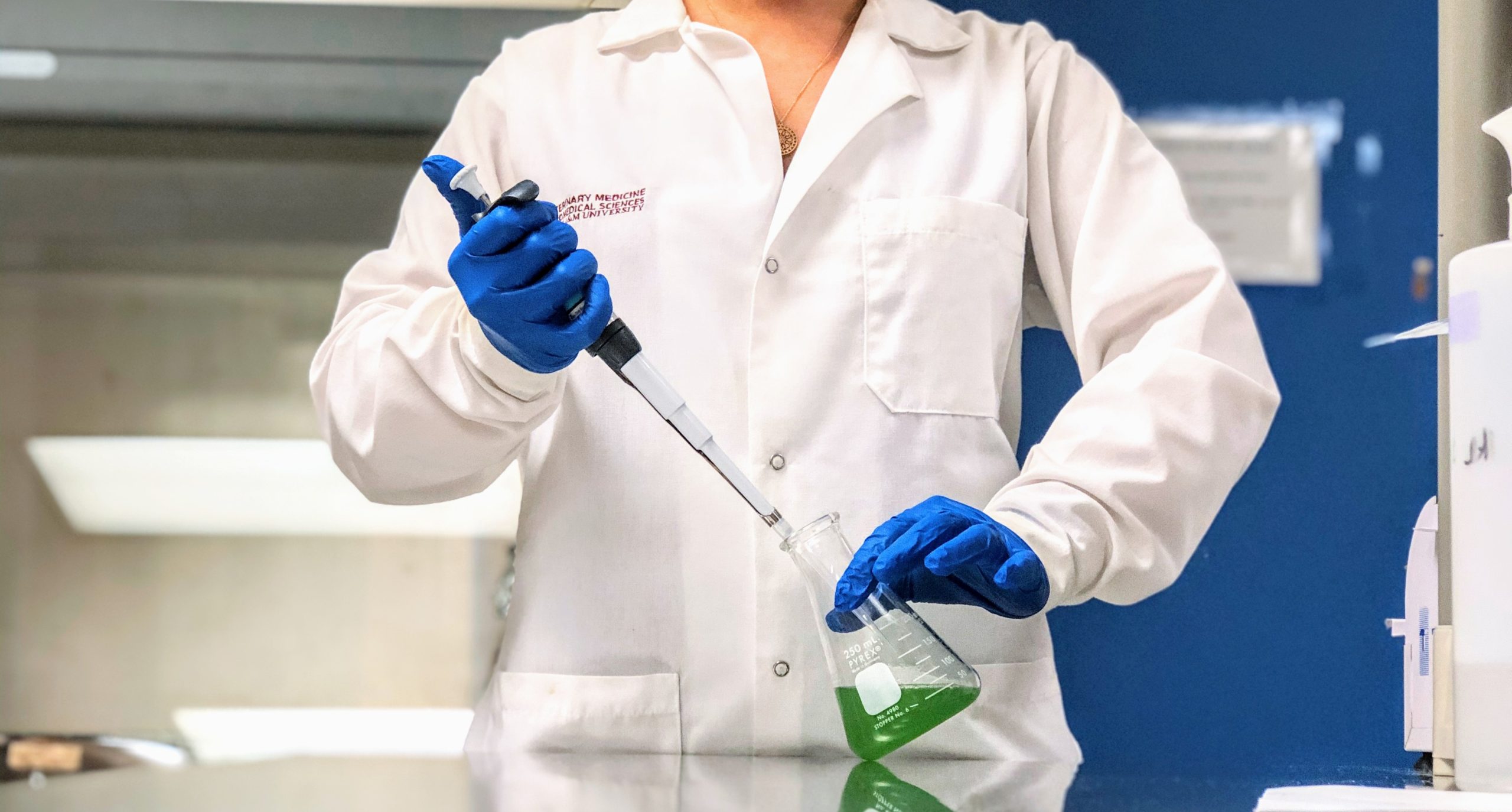Today Dilan and I were having a conversation about the Moderna vaccine trials. I was eager to sign up for their phase III trial, but Dilan had some questions about how safe it really was. It occurred to me that many people don’t really know how drugs are developed, let alone what ‘phase III’ means. So, let’s talk about it!
Overview of the Process
Drug discovery and development takes a really long time, but for good reason. In the United States, the Food and Drug Administration (FDA) is responsible for evaluating new drugs before they reach the market (1). More specifically, there is a unit within the FDA called the Center for Drug Evaluation and Research (CDER) which completes the evaluations and collects associated research for each proposed drug.
The goal of CDER is to ensure that all drugs work as intended, but also that the benefits of taking the drug outweigh the risks. For example, if a drug is effective for curing headaches, but has the bad side effect of losing your hair, the risks of taking this drug outweigh its therapeutic benefits.
Drug companies must first test a drug before they can try to sell it. After appropriate testing, the company sends CDER the evidence that their drug is safe and effective. Only when the evidence has been reviewed by a team of scientists within CDER and deemed acceptable (ie. benefits outweigh the risks) can a drug be sold to the public.
This sounds relatively simple – but this entire process can take upwards of 10 years! Why does it take so long? Keep reading –
Stages of Development

The process of drug discovery and development can be divided into stages (2):
- Discovery and Development
- Pre-clinical Research
- Clinical Development
- FDA Data Review
- Post-Marketing Monitoring
1. Discovery and Development
The first step in the drug development process is actually discovering the compound a company wants to go through with developing. This begins with something called target identification. In short, a target is a gene or protein that plays a significant role in the disease of interest. Following target identification, drug candidates are discovered and tested for their interaction with the target (3).
Compound discovery used to be done primarily by identifying active ingredients from already existing medicines or basically by chance. (You can imagine how inefficient this was.) Now a days compounds can be discovered in a number of ways including screening chemical libraries, chemical/drug modelling, and testing existing diseases through ‘reverse’ pharmacology (4). Even now, a company may screen more than 5,000 molecules for each potential drug candidate!
The drug discovery step comes to an end when one lead compound is found for the drug candidate which is used to move forward in the process.
2. Pre-clinical Research
Once a promising compound is discovered, many experiments are conducted to gather information on the bioactivity (how it works in the body), the safety, and the efficacy of the drug. These include tests to determine: how the compound would be absorbed, distributed, metabolized, and excreted, the drug’s potential benefits and mechanisms of action, the best dose to achieve the desired effects, the best way to administer the drug, etc.
As the name suggests, pre-clinical tests refer to tests done prior to testing in humans. Usually pre-clinical studies include the use of in vitro and in vivo tests. In vitro means “in a glass” and refers to experiments such as cell culture experiments. In vivo means “in a living organism” and refers to experiments such as animal studies (normally rats and mice). In silico experiments (preformed on a computer) may also be utilized to gather even more information.
All pre-clinical studies must follow good laboratory practice guidelines set forth by the FDA. These guidelines set minimum requirements for study conduct, study facilities, study personnel, etc. The pre-clinical step in drug development is finished when detailed information is gathered on dosing and toxicity levels of the drug.
3. Clinical Development
At this point in the process, researchers can move their testing into human subjects. Even though pre-clinical studies are required to answer questions about a drug’s safety, the human body is so complex that these studies cannot be a substitute for human studies.
Before a clinical study can commence, a company must submit Investigational New Drug Process (IND) paperwork to the FDA. This application must include all the pre-clinical data collected on the drug, manufacturing information, and the clinical protocols and investigator information (5).
Clinical Research is broken up into three phases (6):

Phase 1 can be thought of as the healthy volunteer study. Phases 2 and 3 focus on the patient population (ie. people with the disease or condition the drug is meant for). Movement through the different phases of clinical trials are dependent on successful completion of the previous phase – this isn’t always easy. Approximately 70% of drugs pass phase 1. However, only 33% pass phase 2 and 25-30% pass phase 3.
4. FDA Data Review
The forth step in the process is a “whole package” review by the FDA (or really CDER). While the IND application was already submitted prior to clinical trials, researchers must submit all new data from clinical trials along with a new drug application (NDA). The FDA then reviews all submitted information and decides whether to grant approval to the company or not. Not only does the FDA need to determine if the drug works, but they need to decide if any side effects associated with the drug are too high a risk to the benefit the drug provides. Sometimes, the FDA may request additional research or a larger expert advisory panel before making a final decision.
These decisions take time and this review process can take as long as a few years being as these packages can be more than 100,000 pages! Sometimes accelerated approval may be granted if the evidence is strong that there will be an immediate positive impact by putting the drug on the market.
5. Post-Marketing Monitoring
The final step to drug discovery and development is monitoring the drug after it hits the market. This is because there is so much variability in the whole population, there is always a possibility that other side effects will arise. This involves the reporting of all effects by manufacturers, medical professionals, and consumers.
COVID vaccines
Now that you know how long this process takes, I hope it gives you a greater appreciation for how fast COVID19 vaccines are currently being developed. The marketing of a vaccine for COVID19 will be the fastest drug to ever make it to the market!
As of today, July 28th 2020, Moderna is beginning phase 3 trials for their mRNA vaccine (7). (I have a previous blog article on vaccine types here.) Similarly, Pfizer also is starting phase 3 trials (8). There is a slight difference in vaccine clinical trials compared to therapeutic drug clinical trials. Because vaccines are meant to be preventative and not a treatment, phase 2 and 3 trials do not need to occur in diseased patients. Instead, patients receiving the vaccine will be monitored for the development of antibodies.
Summary
Wow – I know that was a lot of information, so let me summarize it real quick.
The drug discovery and development process is broken down into 5 main steps. The first being actual discovery of the target and drug candidate. Following discovery, the possible drug must undergo pre-clinical studies to identify any toxicity and to determine proper dosing of the drug. Following successful pre-clinical studies, studies are moved into humans to test safety and efficacy of the drug. After successful clinical trials, the FDA goes through all of the data collected by the researchers to determine if the drug is safe to go to market. Finally, after the drug is on the market, it is still the responsibility of the company to monitor any other effects that arise.
If you’re interested in learning more, check out these websites and scientific articles linked below!
- North East Biolab – Drug Development
- PhRMA – Biopharmaceutical Research and Development
- FDA – Drug Development Process
- Vrbanac & Slauter (2017) – ADME in Drug Discovery





2 COMMENTS
Kadie
4 years agoWow this is really interesting! I knew the basics but not really in detail. It does give you a new appreciation (and maybe a little bit of apprehension) on how fast the COVID-19 vaccine is being developed. I know how important it is to get it though and definitely plan on it. Great useful information! Thanks!
The Pretty PhD
4 years ago AUTHORI’m so glad you found it helpful! It is definitely is amazing how fast we’ve been able to develop COVID vaccines. Thanks for checking it out 🙂